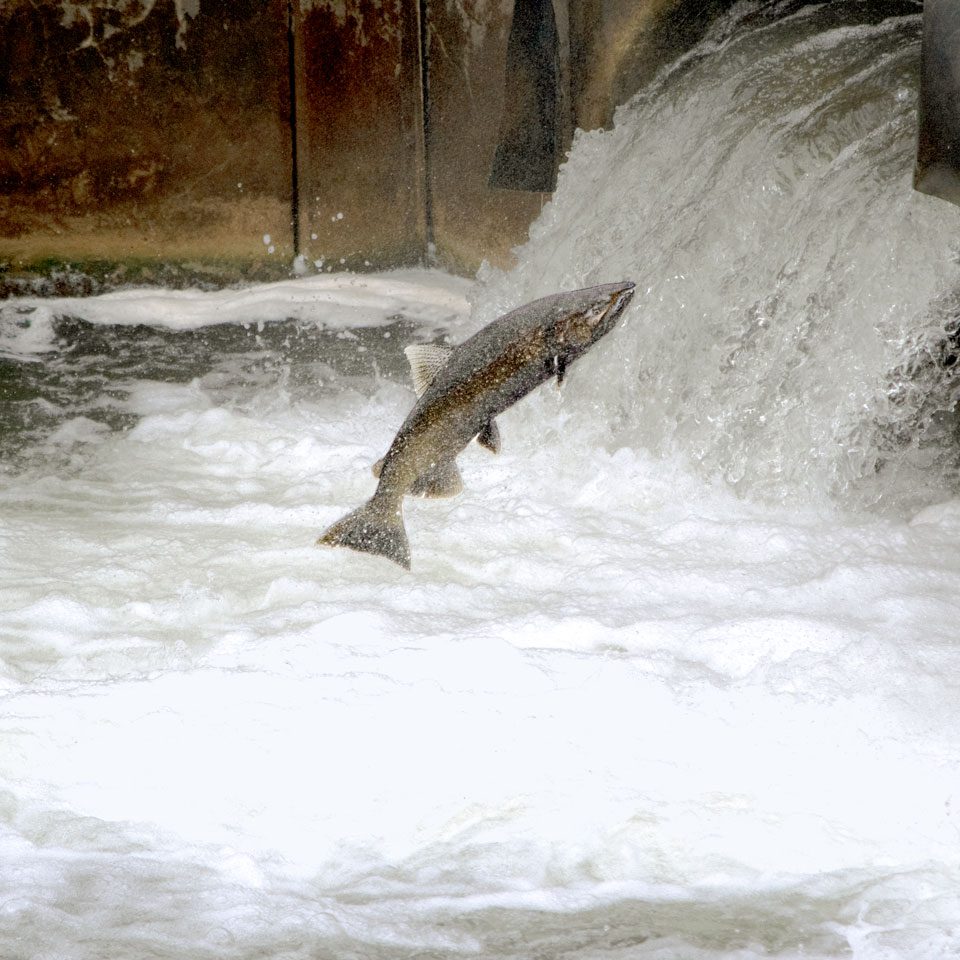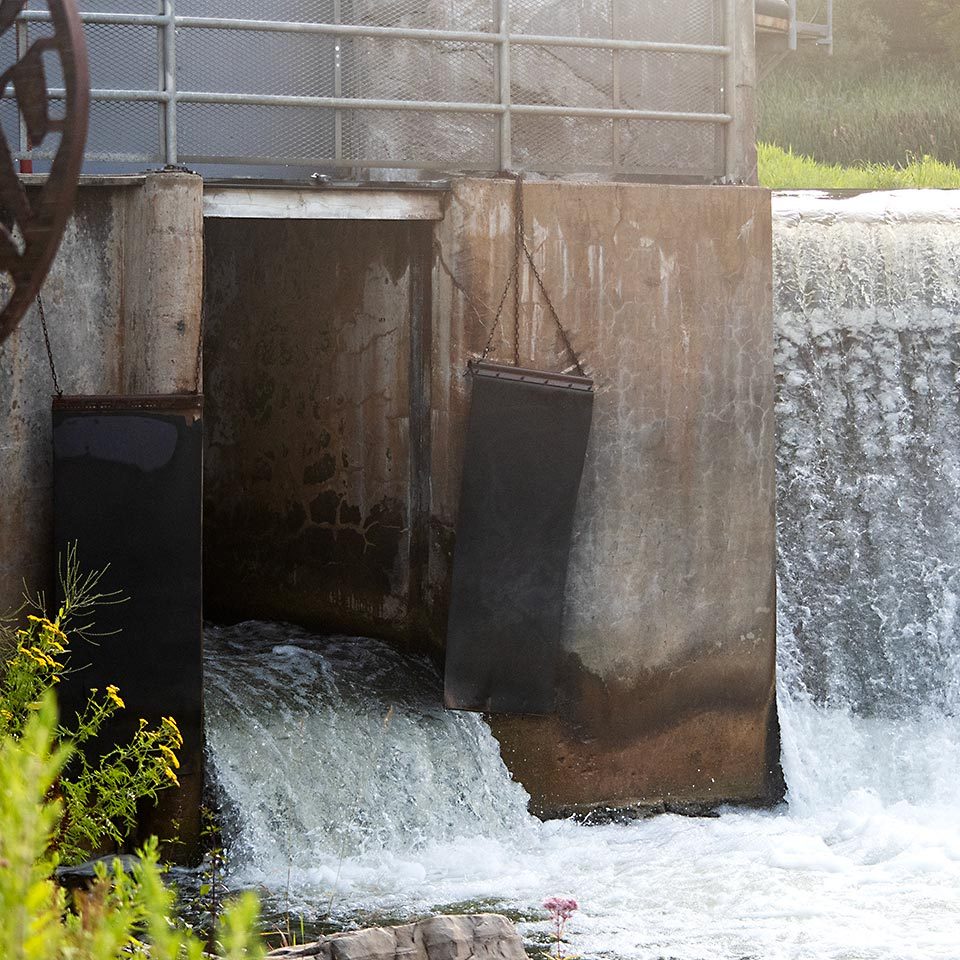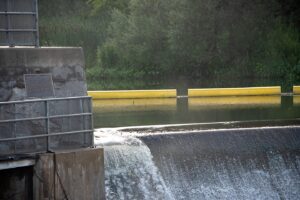In March 1885, James Walker Quinlan started the Port Hope Electric Light and Power Company (to replace gas-powered street lights). From the workshop of W.J. Wallace (now 5 Cavan Street) and powered by steam, this plant was soon doubled in size by a move to the Beamish dam, thus utilizing hydro electricity from the Ganaraska River. This was the site where the Globe File Works later located and, even later, the Nicholson File Factory.
In 1889, Dr. Robert Corbett bought the system and the generating plant was moved to Lake Ganaraska (Corbett’s Pond) in 1893 and a larger dam was constructed. This dam has been plagued by at least two floods and a fire. Power from Corbett’s Dam continued until 1912 and the site was sold to private interests in 1943.
Fish Ladder Built
In 1973, conservation groups constructed the fish ladder in the dam to allow for fish passage. Previous to the installation of the fishway, migratory fish were manually transported over the dam.
Since 1974, the Ganaraska Fishway has been in operation at Corbett’s Dam. Corbett’s Dam is the first barrier on the river preventing fish from migrating upstream. The fishway is a pool and weir style, consisting of a concrete channel 90 feet long and 5 feet wide. Baffles divide the area into nine pools, each of which is about one foot higher than the former. The water flows from pool to pool. The fish negotiate each jump or level at their leisure until they have cleared the dam — approximately 12 feet total.
The fishway was designed to allow for fish passage of migratory jumping fish, while serving as a barrier to the invasive Sea Lamprey. In 1975, the Ganaraska Region Conservation Authority took ownership of the dam, while the fishway was in the ownership of the, then, Ministry of Natural Resources.
An electronic fish counter was originally installed in 1987 to record the number of migratory rainbow trout passing through the fishway. However, in 2016, a fish scanner and camera were installed, allowing biologists and the general public to see fish move through the fishway remotely.
The system involves an infrared scanner that captures an image of the fish, which is then computerized to show the outline of the fish. This allows species identification, length estimate, sex determination and whether the fish is wild or hatchery raised.
Once the scanner has been triggered, a video camera system is activated to capture a video clip of the fish swimming through the fishway. The system works with the River Watcher System and data can be seen at River Watcher Daily.



